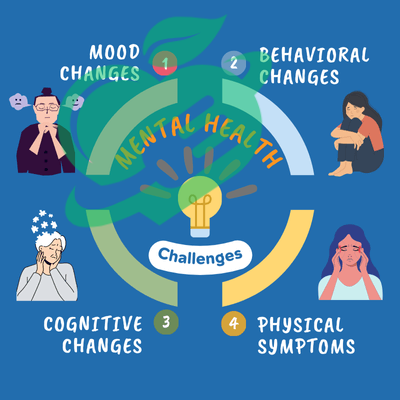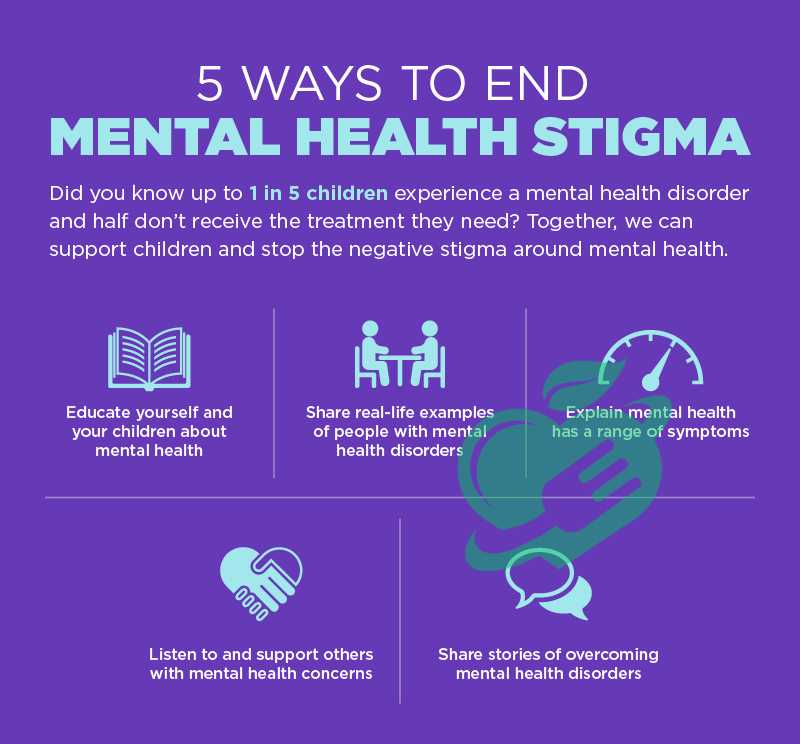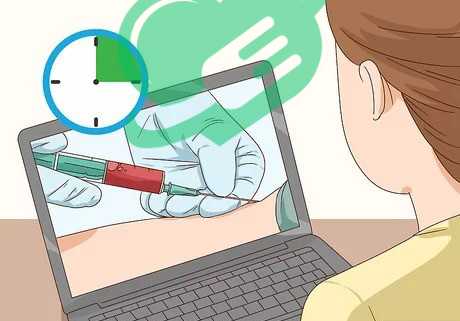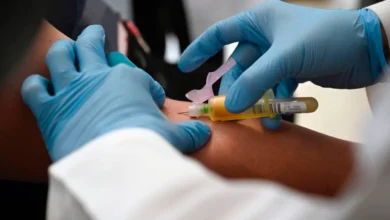Hemophobia: Overcome the Fear of Blood Today

Understanding Hemophobia
Definition of Hemophobia
Hemophobia, often referred to as a blood phobia, is an intense, irrational fear of blood. This can be triggered by seeing blood or even by the thought of it. For some individuals, the mere sight of blood can provoke overwhelming anxiety or panic attacks. Unlike a general dislike or mild discomfort surrounding blood, hemophobia can significantly impair everyday life and lead to avoidance of situations where exposure to blood might occur. Imagine being in a doctor’s office, waiting for a routine check-up, and the mere thought of a needle or blood test sends your heart racing. This is the reality for many who live with hemophobia.
Causes and Symptoms of Hemophobia
The causes of hemophobia can be complex and varied. While some individuals may develop this phobia due to a traumatic experience involving blood—such as an accident or medical event—others may inherit it genetically. In many cases, the roots of hemophobia are not well understood, but it’s essential to recognize its impact. Common symptoms include:
- Physical Reactions: Rapid heartbeat, sweating, or trembling when confronted with blood.
- Emotional Responses: Severe anxiety, dread, or an overwhelming sense of panic.
- Avoidance Behaviors: Steering clear of medical settings or discussions involving blood.
Additionally, individuals may experience nightmares or intrusive thoughts related to blood, further complicating their overall mental health. Recognizing the signs of hemophobia is crucial in paving the way for effective coping mechanisms and support. Understanding this phobia allows both individuals and their loved ones to better navigate the challenges it presents.

Impact of Hemophobia on Daily Life
Emotional and Physical Effects – Hemophobia
Living with hemophobia can feel like carrying a heavy weight that affects both the mind and body. The emotional effects are often profound; individuals with this phobia frequently battle feelings of shame or embarrassment, particularly when they struggle to control their fear in social situations. Consider an example: a friend attends a family gathering only to discover that someone has sustained a minor injury resulting in blood. For them, the gathering quickly shifts from a moment of joy to a panic-inducing scenario. Physical effects can include:
- Panic Attacks: Heart palpitations, shortness of breath, and dizziness when confronting blood-related situations.
- Chronic Stress: Ongoing anxiety can lead to headaches, fatigue, and elevated blood pressure.
These emotional and physical challenges can disrupt daily functioning, making it difficult to enjoy activities that involve health care or well-being.
Challenges in Seeking Medical Help – Hemophobia
Seeking medical help presents an array of challenges for those with hemophobia. The fear of blood can lead to avoidance of medical appointments altogether, which may exacerbate health issues over time. A person may know their symptoms need attention, yet the thought of facing blood—whether in tests or treatments—overwhelms them. Some specific challenges include:
- Delaying Treatments: Avoiding routine check-ups or procedures that involve blood work.
- Increased Anxiety: The anticipation of medical visits can trigger heightened anxiety levels days or weeks in advance.
Ultimately, these barriers create a cycle that perpetuates the fear, making it tougher to seek necessary care. Acknowledging these hurdles is the first step toward finding effective solutions and breaking the cycle of avoidance.

Coping Mechanisms for Hemophobia
Relaxation Techniques – Hemophobia
When navigating the challenges posed by hemophobia, finding effective coping mechanisms can significantly improve daily life. One of the first steps is to practice relaxation techniques, which help reduce overall anxiety levels. Simple exercises can be done anywhere, anytime, and can make a world of difference. Some effective relaxation techniques include:
- Deep Breathing: Inhale deeply through the nose, hold for a few seconds, and exhale slowly through the mouth. This can help calm the nervous system and reduce panic.
- Progressive Muscle Relaxation: Tense and then relax each muscle group in the body, starting from the toes and working up to the head. This focuses attention away from fear and centers it on the body.
- Visualization: Imagine a safe and peaceful space. This mental retreat can provide comfort in moments of heightened anxiety.
Exposure Therapy
Another commonly recommended approach is exposure therapy. This technique gradually exposes individuals to the source of their fear in a controlled environment, allowing them to develop coping strategies. For someone with hemophobia, this could mean starting with virtual simulations of medical settings involving blood or simply looking at images under guidance. The process typically involves:
- Gradual Steps: Start with less distressing stimuli, like pictures of blood, before eventually facing real-life situations.
- Creating a Safe Space: A therapist often provides support, ensuring that individuals feel secure throughout the process.
Cognitive Behavioral Therapy
Lastly, Cognitive Behavioral Therapy (CBT) is an effective treatment for hemophobia. This approach focuses on identifying and changing negative thought patterns that contribute to the fear. Key aspects of CBT include:
- Challenging Negative Thoughts: Learning to combat irrational beliefs surrounding blood.
- Behavioral Assignments: Practicing coping strategies outside of therapy sessions, slowly integrating these techniques into real-life situations.
By embracing these coping mechanisms, individuals with hemophobia can take meaningful steps toward reclaiming their lives and improving their mental wellness.

Building a Support System
Family and Friends
In the journey of managing hemophobia, having a strong support system is invaluable. Family and friends play a vital role by offering understanding, encouragement, and comfort. When loved ones are informed about hemophobia, they can better support individuals facing anxious moments. Here are some ways family and friends can help:
- Open Communication: Encourage honest conversations about fears and triggers. This transparency fosters empathy and understanding.
- Accompanying to Appointments: Having a trusted person by one’s side during medical visits can be reassuring, serving as a buffer against anxiety.
- Reinforcing Coping Strategies: Loved ones can remind individuals to practice relaxation techniques or help them focus on positive thoughts when anxiety hits.
Read also : Unveiling the Mysteries of Yoga: A Comprehensive Beginner’s Handbook
Mental Health Professionals
Seeking help from mental health professionals is another critical element in building a solid support network. Therapists can provide specialized strategies to manage hemophobia effectively. They can help tailor coping mechanisms to fit individual needs. Benefits of working with a professional include:
- Personalized Therapy Plans: Tailoring treatments such as CBT and exposure therapy to specific circumstances.
- Continuous Support: Regular sessions allow for ongoing support, tracking progress, and adjusting strategies as needed.
Support Groups and Online Communities
Finally, support groups and online communities can be incredibly beneficial for someone with hemophobia. Connecting with others who share similar experiences fosters a sense of belonging and understanding. Consider:
- Peer Support: Sharing stories and coping strategies can offer fresh insights and encouragement.
- Resources and Advice: Membership in online forums can provide valuable information regarding new approaches and treatments.
By integrating these elements into one’s life, individuals with hemophobia can cultivate a comprehensive support system that reinforces their journey toward overcoming their fears.

Tips for Managing Hemophobia in Various Situations
Dealing with Medical Procedures
Navigating medical procedures can be particularly challenging for those with hemophobia. The thought of needles, blood tests, or surgical settings can provoke intense anxiety. However, several strategies can help ease these encounters. Here are some effective tips:
- Communicate with Healthcare Providers: Let your doctor or nurse know about your hemophobia beforehand. Most healthcare professionals are trained to accommodate such needs and can provide extra support or adjust their approach.
- Bring a Support Person: Having a trusted friend or family member accompany you can provide emotional support, whether it’s holding your hand or engaging in conversation to distract you.
- Practice Visualization: Before the appointment, visualize yourself in a calm, safe place—a beach, a cozy room, or anywhere you feel at ease. This mental exercise can help reduce anxiety.
Handling Blood-related Situations in Everyday Life
Blood-related situations can arise unexpectedly in daily life, whether it’s a minor cut or a medical emergency. Planning for these moments can empower individuals with hemophobia to respond more confidently. Consider these strategies:
- Stay Calm in Emergencies: If someone near you is injured, focus on practical steps: calling for help or providing assistance without directly confronting the blood. Challenge yourself to stay composed, reminding yourself that it’s a temporary situation.
- Educate Yourself: Understanding the body and the medical system can demystify the fear. Learn about how the body heals and the processes involved in medical procedures related to blood.
- Desensitize Gradually: Start small—view pictures of blood or watch movies with medical scenes, gradually increasing exposure over time. This can help build resilience against panic triggers.
By implementing these tips, individuals can create supportive frameworks to navigate medical situations and everyday encounters, making their experiences more manageable and less stressful.

Educating Others About Hemophobia
Communicating Your Needs
One of the most empowering steps individuals with hemophobia can take is effectively communicating their needs to those around them. By being open and honest about their fears, they can foster understanding and support from family, friends, and colleagues. Here are some practical steps for effective communication:
- Be Transparent: Share your experiences openly, explaining what hemophobia is and how it affects your daily life. This helps demystify the condition for others.
- Express Specific Needs: If medical procedures are on the agenda, let your healthcare provider know how they can help ease your anxiety. For instance, requesting a moment to breathe before a blood test can be incredibly beneficial.
- Ask for Patience: Remind friends and family that your fear isn’t something you can simply “get over.” Their patience and support can make a world of difference.
Raising Awareness in Your Community
Beyond personal relationships, raising awareness about hemophobia within the community can help create a more understanding environment. Sharing knowledge can lead to more compassionate responses to those affected. Consider these ideas to raise awareness:
- Organize Workshops or Seminars: Partner with mental health professionals to host informative sessions on hemophobia, breaking down the stigma and educating your community.
- Utilize Social Media: Platforms like Facebook or Instagram are powerful tools for sharing personal stories or facts about hemophobia, ultimately inspiring others to learn and connect.
- Engage with Local Organizations: Collaborating with local health organizations or schools can introduce resources and materials that promote understanding of hemophobia.
By proactively communicating needs and raising awareness, individuals with hemophobia can not only advocate for themselves but also help others gain insight into this often-misunderstood condition. This approach fosters a more supportive and informed community for everyone.

Seeking Professional Help
When to Consider Therapy
Knowing when to seek professional help for hemophobia can be a game-changer in managing the condition. If your fear of blood is interfering significantly with daily activities, relationships, or your overall quality of life, it’s time to consider therapy. Here are a few indications that professional support may be necessary:
- Avoidance Behavior: If you find yourself delaying or avoiding medical appointments, even for routine check-ups, it’s a sign that your fear is becoming unmanageable.
- Persistent Anxiety: Frequent panic attacks or overwhelming anxiety when thinking about or encountering blood suggests the need for intervention.
- Impact on Daily Life: If your work, social interactions, or personal relationships are affected by your fear, seeking help could provide you with the skills to cope and thrive.
Types of Therapies Available for Hemophobia
There are several therapeutic approaches that can effectively help individuals manage hemophobia. Finding the right type depends on personal preferences and the severity of the fear. Some common types include:
- Cognitive Behavioral Therapy (CBT): This evidence-based therapy focuses on changing negative thought patterns and behaviors related to blood. Through CBT, individuals can learn to challenge their fears and replace them with more rational thoughts.
- Exposure Therapy: Gradual exposure to feared stimuli in a controlled environment, such as discussing blood or viewing images, can help desensitize individuals to their triggers over time.
- Mindfulness and Relaxation Techniques: Therapists may incorporate mindfulness strategies, such as deep breathing and meditation, helping individuals manage anxiety effectively when confronted with blood-related situations.
By seeking professional help and exploring these types of therapies, individuals can take significant steps toward overcoming hemophobia, ultimately improving their well-being and quality of life.

Overcoming Stigma and Misconceptions
Addressing Stereotypes
One of the major hurdles individuals with hemophobia face is the stigma and stereotypes that surround mental health conditions. Often, people might categorize someone with hemophobia as simply being “overly dramatic” or “weak.” This misunderstanding can leave individuals feeling isolated and deterred from seeking help. To combat these stereotypes, consider the following strategies:
- Educate Others: Share information about hemophobia, emphasizing that it is a legitimate phobia, not just a sign of weakness. Providing accessible resources or articles can help demystify the condition for those around you.
- Share Personal Experiences: Relating your journey with hemophobia can humanize the condition. It can also help others empathize, changing perceptions in the process.
- Promote Empathy: Encourage friends and family to walk in your shoes, to try and understand the intense fear that comes with this phobia. Understanding fosters compassion and patience.
Advocating for Better Understanding
Beyond addressing stereotypes, advocacy plays a crucial role in promoting better understanding of hemophobia in society. Individuals can take small yet impactful steps to create a more inclusive atmosphere. Here’s how to advocate effectively:
- Engage with Schools and Workplaces: Initiate conversations about phobias and mental health in educational and work environments. This could take the form of workshops, discussions, or awareness campaigns that inform and educate those within the community.
- Utilize Social Media: Platforms like Twitter or Instagram provide a space to share stories, resources, and research about hemophobia. Engaging with larger conversations surrounding mental health can amplify awareness.
- Collaborate with Mental Health Organizations: Partnering with local or national organizations can help spread information through outreach efforts. By participating in events, you can foster connection and understanding.
By actively addressing stereotypes and advocating for greater awareness, individuals with hemophobia can contribute to a culture of understanding, acceptance, and support, ultimately making it easier for everyone to navigate their fears.

Moving Forward with Hope
Celebrating Progress and Small Victories
As individuals navigate the complexities of hemophobia, it’s essential to recognize and celebrate progress, no matter how small. Each achievement can foster motivation and reinforce the belief that overcoming fear is possible. Consider the following ways to celebrate victories:
- Acknowledge Small Steps: Did you manage to look at a picture of blood without panicking? That’s a win! Celebrating these small victories builds confidence and encourages further progress.
- Share Joy with Others: Share your accomplishments with trusted friends or family members. Their support can amplify your joy and provide a sense of community. For instance, if a friend encouraged you during a particularly tough appointment, express your gratitude.
- Create a Success Journal: Document each small victory in a journal. Reflecting on these moments can remind you of how far you’ve come, especially on tough days.
Read also : How Repression Shapes Your Mind and Society
Planning for Long-term Wellness
Looking ahead to long-term wellness involves proactive planning and setting realistic goals. It’s important to create a structured approach to managing hemophobia as part of your overall mental health strategy. Here are some strategies to consider:
- Set Achievable Goals: Break down your long-term objectives into smaller, manageable goals. For example, if your aim is to attend a blood donation drive, start by visiting the venue just to familiarize yourself with the environment.
- Maintain Regular Therapy: Continuous engagement with mental health professionals can provide valuable support for sustained progress. Regular sessions can help reassess coping strategies and adjust goals as needed.
- Incorporate Self-Care: Prioritize self-care practices, such as mindfulness, physical activity, or hobbies that bring joy. A well-rounded approach to wellness boosts resilience against anxiety triggers.
By celebrating progress and planning for wellness, individuals with hemophobia can cultivate a hopeful outlook on their journey. Embracing the small victories while proactively managing their fears paves the way for a fulfilling future.



